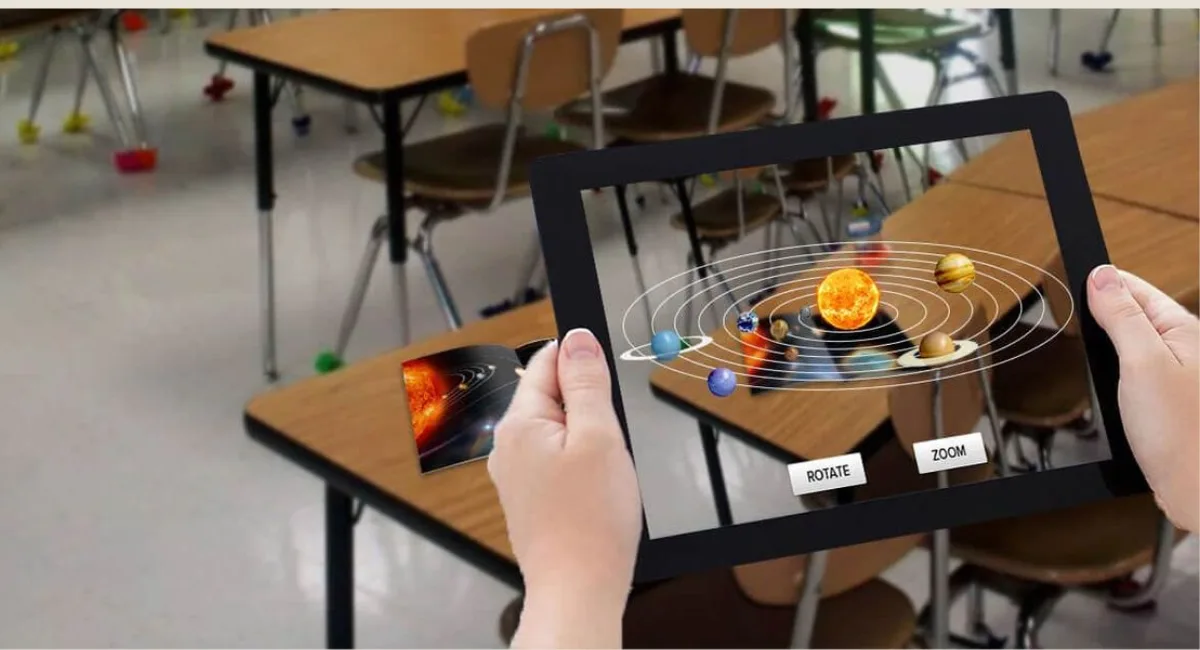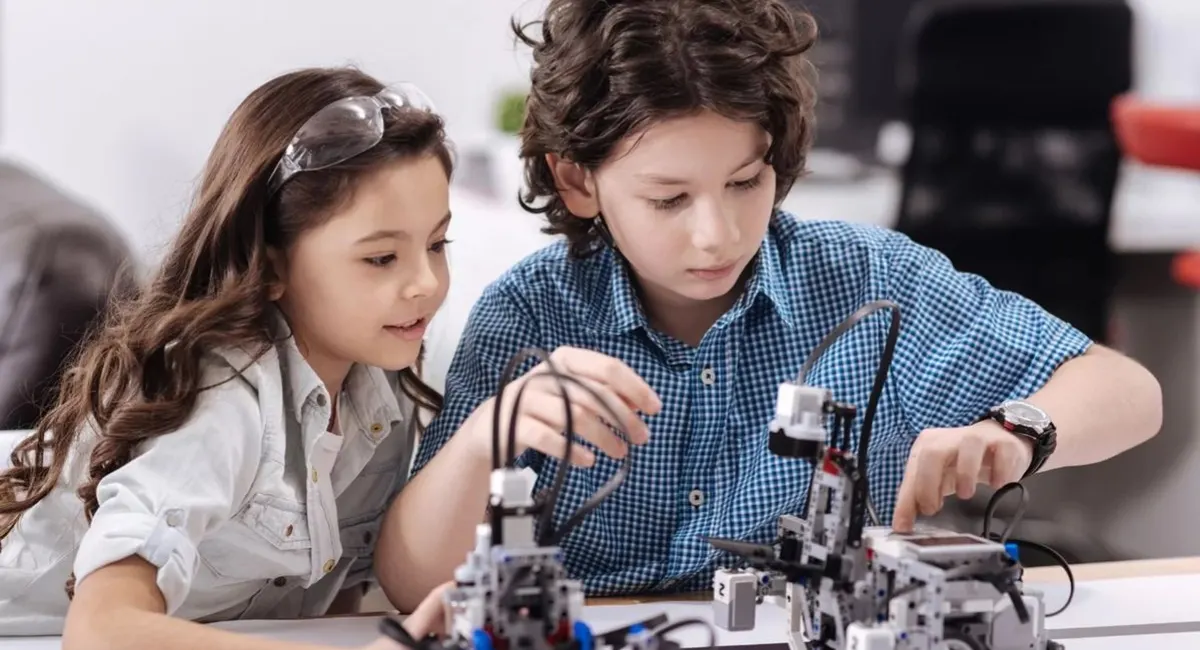Introduction to AR in Education
The classroom is going digital. AR in education is one of the most exciting tools. AR or Augmented Reality is a combination of digital and real worlds. It enables the students to observe and experience 3D models, animation and simulation within their classroom.
AR in education unlike the conventional one makes the lessons interesting. Students are able to learn through visual and interactive means. AR is developing new methods of comprehending complex issues, both in history and science.
What is AR in Education?
AR in education is the application of augmented reality products to the teaching and learning processes. It superimposes digital images, sounds and videos on physical objects. Smartphones, tablets or AR headsets enable students to access this content.
As an example, students do not have to read the textbook about the solar system; they can look at a 3D model of planets. They are able to move around, zoom and get a closer look at each planet. This renders learning more realistic.
Benefits of AR in Education
1. Enhanced Engagement
AR makes learning interactive. Students are no longer passive listeners. Instead, they actively participate in lessons.
2. Better Understanding of Complex Topics
Some subjects are difficult to visualize. AR in education provides 3D models to simplify them. For example, medical students can study human anatomy with AR simulations.
3. Encourages Collaboration
AR-based group activities allow students to work together. This promotes teamwork and problem-solving.
4. Accessible Learning
AR tools can support students with different learning needs. Visual learners, for example, benefit greatly from interactive lessons.
5. Real-Time Feedback
Teachers can track student performance in real time. AR in education provides instant results and feedback.

Applications of AR in Education
Science and Medicine
AR lets students explore biology, chemistry, and physics with 3D models. Medical students can practice surgeries in simulated environments.
History and Geography
Through AR, historical monuments and maps come alive. Students can “visit” ancient civilizations without leaving the classroom.
Engineering and Architecture
Future engineers can test designs with AR simulations. Architecture students can walk through 3D building models.
Language Learning
AR apps provide interactive flashcards, translations, and immersive experiences. Students can learn faster by linking words with visuals.
Special Education
AR in education supports students with disabilities. For example, visual aids can help students with learning difficulties grasp complex concepts.
AR in Education vs. Traditional Learning
| Aspect | Traditional Learning | AR in Education |
| Engagement | Passive | Highly Interactive |
| Tools | Books, Chalkboards | Smartphones, AR Headsets |
| Understanding | Text-Based | Visual & Experiential |
| Collaboration | Limited | Active Group Learning |
| Accessibility | One-size-fits-all | Personalized Learning |
Challenges of AR in Education
While AR in education is promising, it also faces challenges.
- Cost of Technology – AR devices and software can be expensive.
- Training for Teachers – Teachers must learn how to integrate AR into lessons.
- Digital Divide – Not all students have access to smartphones or AR devices.
- Content Development – Quality AR content requires skilled developers.
Future of AR in Education
The future of AR in education looks bright. With the rise of 5G and advanced devices, AR will become more accessible. Schools and universities are already experimenting with AR-based curricula.
also read-Digital Leadership Trends You Should Know in 2025
In the coming years, AR will:
- Provide immersive virtual classrooms.
- Support lifelong learning and professional training.
- Integrate with AI to personalize student experiences.
Conclusion
AR in teaching is a disruptor. It renders the learning a two-way process. AR makes lessons come to life within the field of science, as well as in history. As much as there are challenges, the advantages are higher than the disadvantages.
AR will be integrated into the classroom as technology grows. It needs to be adopted by teachers, students and institutions. Education is not only being digital in the future but also augmented.




